In 1973, amid mounting social tensions, property seizures by Marxist-led parties, strikes by conservative transportation unions, and massive street demonstrations by both the political right and left, Chilean politicians failed to reach across the aisle to stabilize democratic institutions. The armed forces intervened; the then-President Salvador Allende committed suicide; and a brutal military dictatorship led by General Augusto Pinochet endured for 17 dark years.
Mindful of the lessons of history, last week Chilean politicians from across the political spectrum signed a monumental accord to, finally, discard the constitution first promulgated during the Pinochet era and draft a new governing charter.
The national political accord was a direct response to over three weeks of intense street demonstrations, marked by masked youths burning public symbols and sacking retail outlets, as well as a massive march of over one million Chileans in the capital Santiago (roughly one in every four adults in the city). It was the largest public gathering in the nation’s history.
Economic ups and downs
The street demonstrations owed more to social media than to established organizations. At the heart of the protests were the nation’s youth, the high school and university students that have traditionally spearheaded Chilean political movements. For these youngsters, their parents and grandparents had grown too complacent, too timid, too fearful that political struggles might lead to excessive polarization and a repetition of the breakdown and repression of 1973.
Chilean youth argued that this time, it could be different. Since 1973, high human rights standards — nationally and across South America — have become mainstream, tying the hands of the national police and military. The Cold War, with its extreme ideological polarization, is a distant memory. While Chile is now divided over social policies, there is broad agreement on maintaining the basic tenets of democratic capitalism. Many Chileans also accept that income distribution has become too unequal and that the social safety net under the poor should be bolstered.
The Chilean economy has performed brilliantly over the past three decades, expanding an average of 5% per year. The sprawling upper-class suburbs of Santiago, with their shiny glass skyscrapers, million-dollar residential condominiums, luxury retail outlets, and countless fine-dining options rival those in any globalized cosmopolitan city.
The fruits of growth have trickled down, with the poverty rate falling from 40% in 1990 to under 10% today. Enrollment rates in institutions of higher education top those of most highly developed nations, and some health indicators surpass those of the United States. Life expectancy at birth has risen from 74 years in 1990 to 80 years today.
But growth has slowed in the last five years and the cost of living has risen. The out-of-pocket costs of education and health have left many households burdened with oppressive debts, and retirement pensions have failed to keep pace. It is a classic case of frustrated expectations, of an emerging middle class that feared it would never own one of those luxury condos. Worse, people feared they could fall back into the poverty of their grandparents.
Chilean politics has long been polarized between an extreme free-market right and left-leaning social democrats and socialists. Center-left governments have introduced a raft of social programs benefiting the middle classes and the poor, but the political right has maintained key elements of its “neo-liberal model” favoring the private provision of physical infrastructure and social services.
The right’s economic model was enshrined in the 1980 Pinochet-era constitution. Economic hegemony was attributed to the private sector, often subsidized by government financial transfers. The poor have remained dependent upon public schools and health clinics, of mixed quality at best, while the middle classes have to pay for privatized, higher-quality social services. Toll roads, even water resources, are licensed to private providers who charge premium rates.
Meanwhile, a series of highly publicized scandals revealed collusion among oligopolistic firms — and between public and private figures —to fix prices of basic necessities such as medicines and toilet paper. The legitimacy and credibility of the political and economic elites plummeted in public opinion polls.
The spark
The immediate spark that led to the massive demonstrations was a small hike in subway fares. Irate students decided to jump over the entrance barriers and riot police responded with beatings — disproportionate uses of force vividly captured on social media. But the deeper roots of the social uprising were anger over visible social inequalities and dashed middle-class aspirations.
Callous government responses to the street demonstrations added fuel to the fire. President Sebastián Piñera, a right-wing billionaire, declared “we are at war,” while a tone-deaf cabinet minister suggested that workers could avoid the higher peak-hour subway fares by leaving for work earlier in the morning. As the street demonstrations gathered momentum, overwhelmed police committed abuses that further enraged the citizenry. Desperate to restore order, Piñera ordered the military into the streets but under restrained orders of engagement, persuading the students that they were correct not to fear a 1973-style crackdown.
The general population was frightened by the inability of the security forces to suppress the masked youth (some of whom appeared well coordinated) who burned and looted cities throughout the country with impunity. Apparently, democratic governments in power since 1990 had neglected to ensure basic intelligence capacities. Recent purges of police and military officers caught in acts of mostly petty corruption had further weakened the state security apparatus.
A political solution worth cheering
Following a global trend among democracies, Chile’s political system has become increasingly fragmented. The rightist coalition supporting President Piñera includes a militantly ideological party (the Independent Democratic Union, or UDI in Spanish) that had supported General Pinochet, a long-standing pro-business grouping (National Renovation), and a more youthful, socially liberal tendency (Evopoli). The left has splintered among varieties of social democrats and 21st-century movements advocating for women’s rights, environmental protection, and a more participatory democracy. The Communist Party, with about 5% of the vote, is also represented in the legislature.
All political parties were under pressure in recent weeks to respond to the social explosion. Almost all were anxious to diffuse the popular ire, to channel dissent into legal, democratic procedures, and to regain some credibility for the political class. There was also interest in preventing right-wing extremists from capitalizing on the disorder in the streets — and to preempt a more determined military crackdown.
After two days of marathon discussions, very early on Friday morning, November 15, the leaders of the legislature appeared before the assembled media to announce a grand compromise. This coming April, voters will be offered a two-part choice: 1) whether a new constitution will be written for Chile, and 2) whether a new constitution should be written by a convention composed of a mixture of existing parliamentarians and freshly elected persons (the rightist preference), or by a constitutional convention entirely comprised of freshly elected persons (a key demand of many protesters).
Following its election in October 2020, the constitutional assembly would be allowed one year to complete its work, which would then be subject to a second plebiscite. The total reform process would take about two years. (The Communist Party did not sign the national accord but said it would participate in the constitutional assembly.)
In exchange for agreeing to draft a completely new constitution, the political right extracted a major concession: Each article of the new charter would have to be approved by a two-thirds vote. In the words of UDI senator Juan Antonio Coloma, this high hurdle was “an important guarantee that no circumstantial majority, of whatever color, could dictate what will be in the founding charter.”
Many Chileans were cheered by the prospects of a new constitution. Nevertheless, they remain vitally concerned that their immediate economic aspirations be addressed and some will likely remain in the streets to advocate for a new social pact. The sitting president and Congress will be under pressure to raise minimum wages and pensions, as well as moderate the costs of health care and education. The healthy Chilean budget has some leeway to respond to social demands, but a major tax reform will be required to begin to address popular expectations for a more inclusive model. National growth rates will have to regain momentum driven by sustained gains in efficiency and productivity.
Hard work lies ahead, as Chileans simultaneously seek to upgrade their social services and modernize their governing institutions and security forces while ensuring business confidence and robust investment. If successful, Chile could regain its reputation as among the most prosperous and advanced democracies in Latin America.
Today, however, Chileans have every reason to celebrate: Their political system and leadership have passed a monumental test and unlike in 1973 have found a consensual path forward.
The Brookings Institution is committed to quality, independence, and impact.
We are supported by a diverse array of funders. In line with our values and policies, each Brookings publication represents the sole views of its author(s).

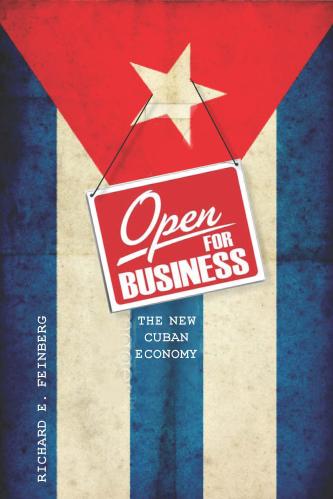
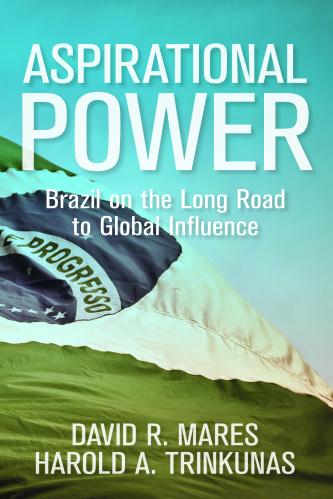
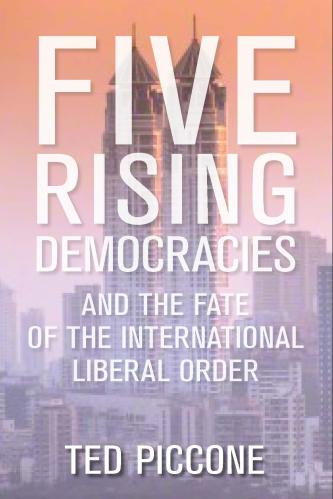
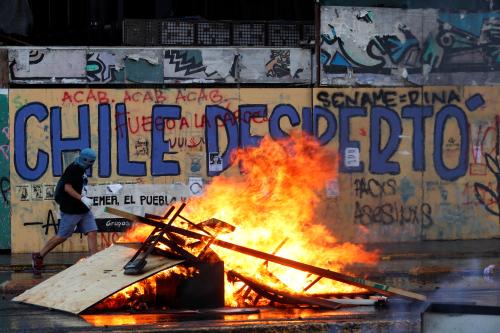
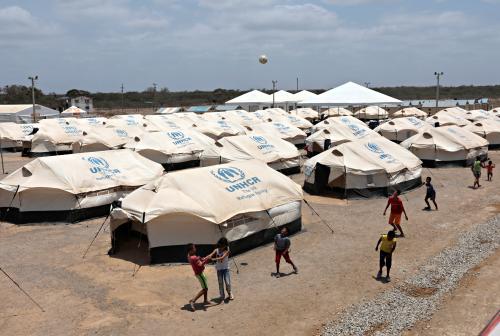

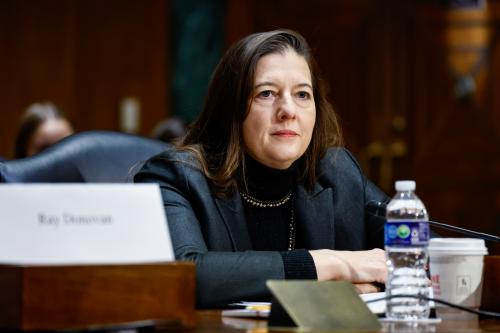
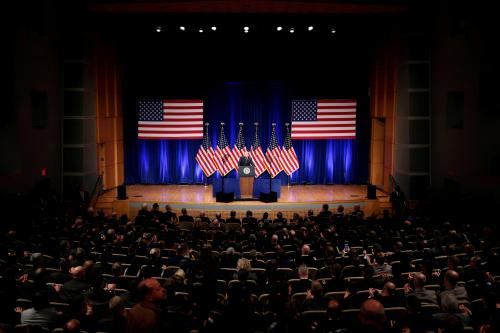

Commentary
Chileans learned the right lessons after the Pinochet era
November 18, 2019